Uncategorized
The Fascinating Aloha Shirt Origin: From Humble Beginnings to Global Icon
The aloha shirt, with its vibrant tropical prints and relaxed fit, has become synonymous with Hawaiian culture and laid-back island living. But where did this iconic garment actually originate? The story behind the aloha shirt origin is far more complex and fascinating than most people realize, involving Japanese immigrants, creative tailors, and a perfect storm of cultural influences that came together in early 20th century Hawaii.

Understanding the origins of Hawaiian shirts requires diving deep into Hawaii’s multicultural history, immigration patterns, and the entrepreneurial spirit that transformed a simple work shirt into a global fashion phenomenon. This comprehensive exploration will take you through the authentic story of how the aloha shirt came to be, from its earliest iterations to its rise as an international symbol of paradise.
The Cultural Melting Pot: Hawaii’s Immigration History
The birth of the aloha shirt cannot be understood without first examining Hawaii’s unique demographic landscape in the early 1900s. Following the annexation of Hawaii by the United States in 1898, the islands experienced a significant wave of immigration from Asia, particularly from Japan, China, and the Philippines. These immigrants brought with them their own textile traditions, sewing techniques, and cultural aesthetics that would eventually blend with Hawaiian and Western influences.
Japanese immigrants played a particularly crucial role in the development of what would become the aloha shirt. Many arrived as contract laborers for Hawaii’s sugar plantations, but as their contracts ended, some transitioned into other trades, including tailoring and garment manufacturing. Their expertise in working with silk fabrics and understanding of kimono construction techniques would prove instrumental in creating the loose, comfortable fit that characterizes authentic aloha shirts.
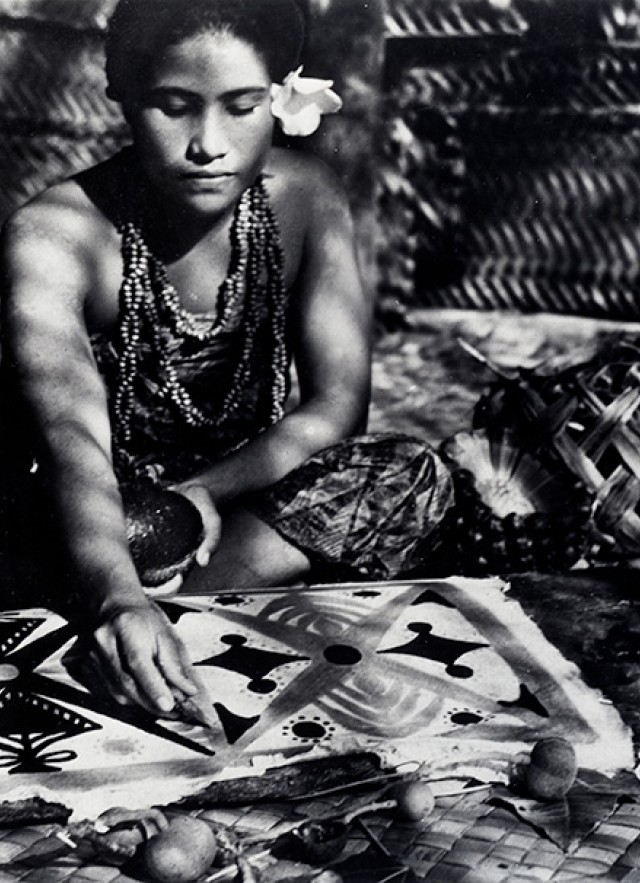
The cultural exchange wasn’t one-sided. Native Hawaiian textile traditions, including the use of kapa cloth and traditional geometric patterns, influenced the aesthetic development of early Hawaiian shirts. Portuguese and Filipino immigrants also contributed their own textile knowledge, creating a truly multicultural foundation for what would become the aloha shirt industry.
The Pioneering Tailors: Key Figures in Aloha Shirt History
Several individuals are credited with creating the first authentic aloha shirts, though the exact origin remains a subject of friendly debate among historians. The most widely accepted story centers around Ellery Chun, a Chinese-Hawaiian businessman who is often credited with coining the term “aloha shirt” and mass-producing these garments in the 1930s.
Chun’s King-Smith Clothiers, located in Honolulu, began selling shirts made from colorful Japanese silk fabrics featuring tropical motifs around 1931. He trademarked the term “Aloha Shirt” and marketed these garments to both locals and the growing number of tourists visiting Hawaii. His business acumen helped transform what had been primarily work shirts into fashionable leisure wear.
However, other tailors also claim important roles in the aloha shirt’s development. Koichiro Miyamoto, a Japanese immigrant tailor, is said to have created some of the earliest versions of Hawaiian shirts in the late 1920s. His shop, located in downtown Honolulu, catered to both plantation workers and urban residents who wanted comfortable, stylish shirts suited to Hawaii’s tropical climate.

Musa-Shiya Kimono Store, operated by the Miyamoto family, also played a crucial role in early aloha shirt production. They began creating shirts from kimono fabric remnants, which not only provided beautiful, high-quality materials but also represented a practical way to repurpose expensive silk fabrics. This innovation helped establish the connection between Japanese textile traditions and Hawaiian shirt design that continues to this day.
From Kimono Fabric to Tropical Prints: The Evolution of Materials
The materials used in early Hawaiian shirt production tell a fascinating story of cultural adaptation and resourcefulness. Initially, many aloha shirts were crafted from repurposed kimono fabrics, which provided access to high-quality silk materials with intricate patterns and vibrant colors. These fabrics, originally designed for traditional Japanese garments, were perfectly suited to the loose, flowing style that would become characteristic of aloha shirts.
The transition from kimono fabrics to purpose-designed tropical print materials marked a significant evolution in aloha shirt development. Local textile designers began creating patterns specifically for Hawaiian shirts, incorporating native Hawaiian motifs such as hibiscus flowers, palm trees, pineapples, and ocean waves. These designs celebrated Hawaii’s natural beauty while creating a distinct visual identity for the garments.
“The early aloha shirts were works of art in their own right, combining the sophisticated textile traditions of Asia with the natural beauty and cultural symbols of Hawaii.” – Hawaiian Textile Historian
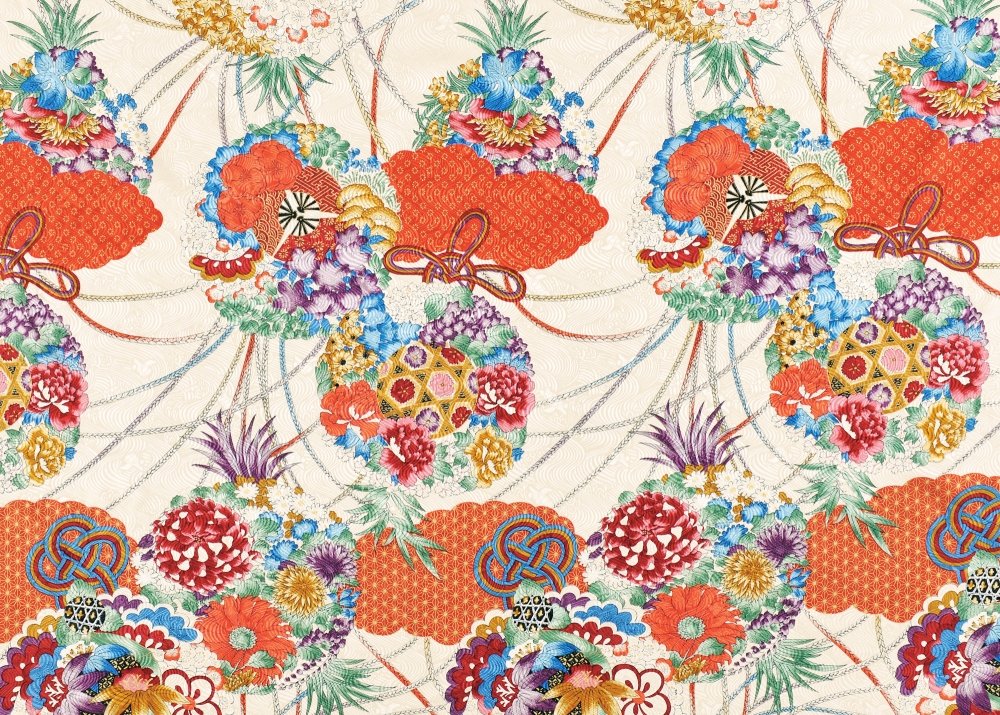
The development of synthetic fabrics in the mid-20th century revolutionized aloha shirt production. Rayon and cotton blends became popular alternatives to silk, offering greater durability and easier care while maintaining the flowing drape that made aloha shirts so comfortable in tropical climates. These materials also allowed for more affordable production, making Hawaiian shirts accessible to a broader range of consumers.
The Rise of Tourism and Cultural Export
The growth of tourism to Hawaii in the 1930s and 1940s played a crucial role in popularizing aloha shirts beyond the islands. Visitors to Hawaii discovered these colorful, comfortable garments and began purchasing them as souvenirs, bringing Hawaiian shirt culture to the mainland United States and beyond.
Hollywood also contributed significantly to the aloha shirt’s rise to fame. Movies set in tropical locations began featuring characters wearing Hawaiian shirts, associating these garments with relaxation, vacation, and exotic adventure. Celebrity endorsements and appearances in popular films helped establish the aloha shirt as a symbol of leisure and escape from everyday life.
- Tourist Impact: Visitors purchased aloha shirts as authentic Hawaiian souvenirs
- Media Influence: Hollywood films featured Hawaiian shirts in tropical and vacation settings
- Cultural Symbol: The shirts became associated with relaxation and island lifestyle
- Export Market: Demand grew on the U.S. mainland and internationally

The post-World War II era saw an explosion in aloha shirt popularity as returning soldiers and increased civilian travel brought more people to Hawaii. Airlines began featuring Hawaiian shirts in their promotional materials, and hotels started incorporating them into their staff uniforms, further cementing the connection between aloha shirts and Hawaiian hospitality.
Design Elements and Artistic Traditions
The design philosophy behind authentic aloha shirts reflects a deep appreciation for Hawaiian natural beauty and cultural heritage. Traditional patterns often feature native Hawaiian flora and fauna, including plumeria flowers, bird of paradise, monstera leaves, and tropical fish. These motifs aren’t merely decorative; they represent specific aspects of Hawaiian culture and the islands’ unique ecosystem.
Color palettes in vintage aloha shirts were carefully chosen to reflect Hawaii’s natural environment. Ocean blues, sunset oranges, tropical greens, and volcanic reds dominated early designs, creating garments that seemed to capture the essence of the islands themselves. The use of these natural color combinations helped establish the visual vocabulary that continues to define authentic Hawaiian shirts today.
The artistic quality of early aloha shirt designs was remarkably high, with many patterns created by trained textile artists who understood both traditional Hawaiian motifs and modern design principles. Some of the most collectible vintage aloha shirts feature hand-drawn designs that were then adapted for fabric printing, resulting in garments that are genuinely wearable art pieces.
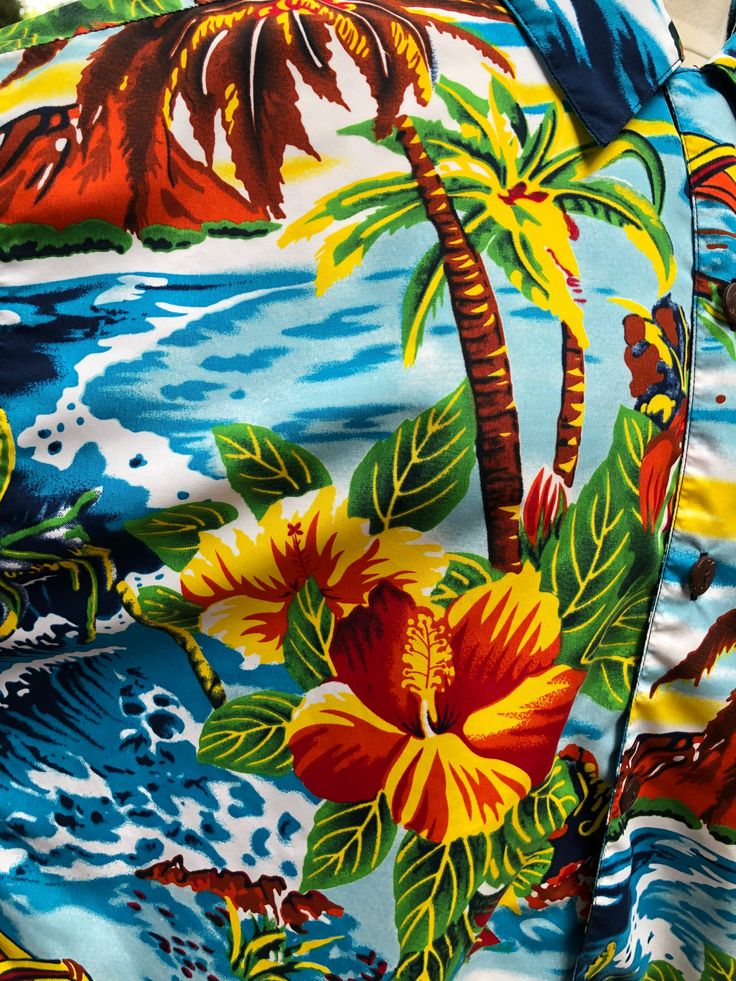
The Golden Age: 1930s-1950s
The period from the 1930s through the 1950s is often considered the golden age of aloha shirt design. During this era, Hawaiian shirt manufacturers perfected their craft, creating garments that balanced comfort, style, and cultural authenticity. The quality of materials and construction during this period set standards that continue to influence modern aloha shirt production.
Major manufacturers like Kamehameha Garment Company and Kahala Sportswear emerged during this period, establishing production standards and design philosophies that would define the industry. These companies employed skilled pattern makers, textile designers, and seamstresses who elevated aloha shirt production from craft-level creation to sophisticated garment manufacturing.
- Material Quality: Premium silk and high-grade rayon fabrics were standard
- Design Sophistication: Complex, multi-color patterns with intricate detailing
- Construction Excellence: Hand-finished seams and careful attention to fit
- Cultural Authenticity: Designs rooted in genuine Hawaiian motifs and traditions
- Artistic Collaboration: Partnerships with local artists and cultural experts

The golden age also saw the establishment of design traditions that continue to influence contemporary aloha shirt production. The classic collar styles, button configurations, and fit proportions that define authentic Hawaiian shirts were largely established during this innovative period.
Cultural Significance and Social Impact
Beyond their role as fashionable garments, aloha shirts carry deep cultural significance within Hawaiian society. The concept of “Aloha Friday” emerged in the 1960s, encouraging Hawaii residents to wear aloha shirts to work on Fridays as a way of celebrating local culture and promoting a more relaxed workplace atmosphere.
This tradition reflected broader changes in American work culture and social attitudes toward casual dress. The aloha shirt became a symbol of work-life balance and the idea that professional excellence didn’t require rigid dress codes. Hawaii’s unique position as both a U.S. state and a distinct cultural entity made the aloha shirt a perfect vehicle for expressing this balanced approach to professional life.
Political and social leaders in Hawaii have long used aloha shirts to communicate their connection to local culture and values. The practice of wearing aloha shirts to official functions and government meetings helped establish these garments as legitimate formal wear within Hawaiian contexts, challenging traditional notions of appropriate professional attire.
Manufacturing Techniques and Quality Standards
The production of authentic aloha shirts involves specific techniques that distinguish genuine Hawaiian garments from mass-produced imitations. Traditional construction methods include hand-sewn buttonholes, matched patterns at seam intersections, and careful attention to the drape and fit of the finished garment.
Quality control in traditional aloha shirt manufacturing extends beyond construction techniques to include careful selection of fabrics and patterns. Authentic manufacturers typically work with textile designers who understand Hawaiian cultural motifs and can create patterns that honor traditional aesthetics while appealing to contemporary tastes.
The printing processes used for aloha shirt fabrics have evolved significantly since the early days of the industry. Modern techniques allow for more complex color combinations and finer detail resolution while maintaining the vibrant colors and durability that characterize high-quality Hawaiian shirts.
“A truly authentic aloha shirt is recognizable not just by its patterns, but by the quality of its construction and the cultural sensitivity of its design elements.” – Master Tailor, Honolulu
Global Influence and Modern Adaptations
The influence of aloha shirt design extends far beyond Hawaii, inspiring tropical and resort wear collections worldwide. Fashion designers from major international brands have drawn inspiration from Hawaiian shirt aesthetics, adapting traditional motifs and construction techniques for global markets.
However, this global popularity has also led to concerns about cultural appropriation and the dilution of authentic Hawaiian design traditions. Many Hawaiian shirt manufacturers and cultural advocates emphasize the importance of understanding and respecting the cultural origins of these garments while adapting them for contemporary markets.
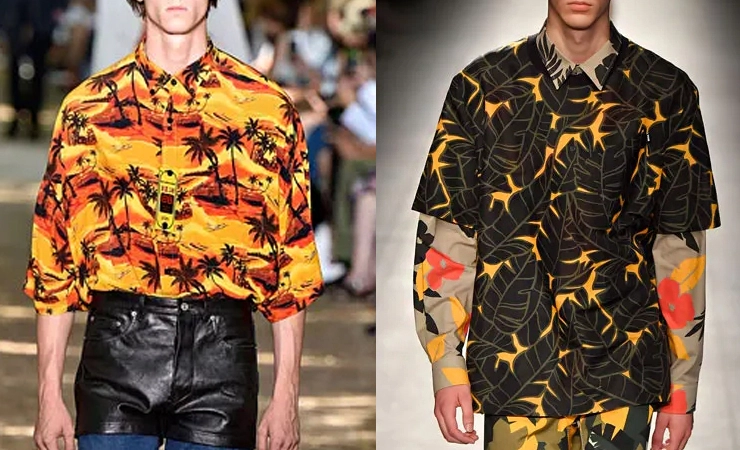
Contemporary aloha shirt production balances respect for traditional design elements with modern manufacturing techniques and market demands. Sustainable production practices and ethical manufacturing have become increasingly important considerations for both producers and consumers of authentic Hawaiian shirts.
Collecting and Preserving Aloha Shirt Heritage
Vintage aloha shirt collecting has become a serious pursuit for fashion historians and cultural enthusiasts. Rare shirts from the golden age of production can command significant prices at auction, particularly pieces from renowned manufacturers or featuring designs by celebrated textile artists.
Museums and cultural institutions in Hawaii maintain collections of historic aloha shirts, recognizing their importance as artifacts of Hawaiian cultural history and textile artistry. These collections help preserve the craftsmanship and design traditions that define authentic Hawaiian shirts.
- Museum Collections: Institutional preservation of historic garments and design archives
- Private Collectors: Enthusiasts who maintain and study vintage aloha shirts
- Documentation Efforts: Cataloging of manufacturers, designers, and production techniques
- Cultural Education: Programs that teach traditional construction and design methods
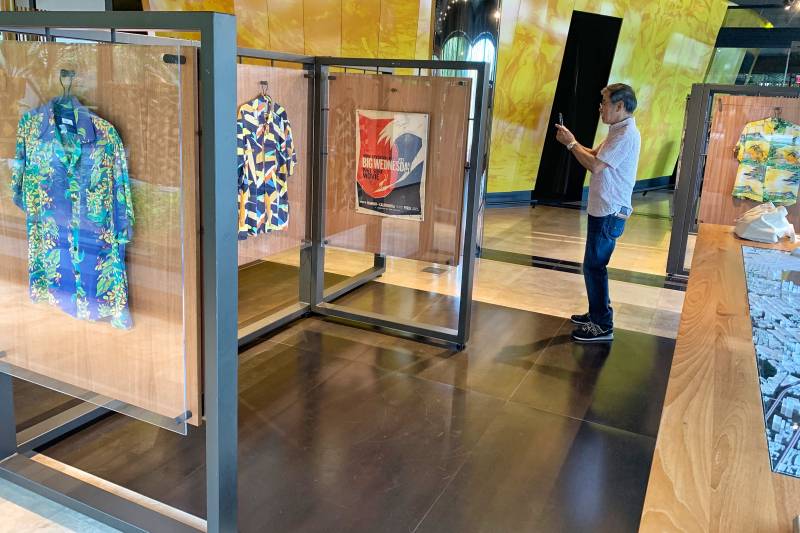
The Future of Aloha Shirt Design and Production
Modern aloha shirt manufacturers face the challenge of honoring traditional design principles while adapting to contemporary market demands and production realities. Sustainable manufacturing practices, ethical labor standards, and cultural sensitivity have become increasingly important considerations in the industry.
Technology has opened new possibilities for aloha shirt design and production, from digital pattern creation to advanced fabric printing techniques. However, many manufacturers emphasize that technological advancement should enhance rather than replace the cultural authenticity and craftsmanship that define genuine Hawaiian shirts.
The future of the aloha shirt industry likely depends on maintaining the balance between cultural authenticity, quality craftsmanship, and accessibility to new generations of consumers who appreciate both the aesthetic beauty and cultural significance of these iconic garments.
Frequently Asked Questions About Aloha Shirt Origins
Q: Who actually invented the aloha shirt?
A: While several individuals are credited with early aloha shirt creation, Ellery Chun is most widely recognized for coining the term “aloha shirt” and mass-producing them in the 1930s. However, Japanese immigrant tailors like Koichiro Miyamoto also played crucial roles in developing the garment’s style and construction techniques.
Q: Were the first aloha shirts really made from kimono fabric?
A: Yes, many early aloha shirts were created from repurposed kimono fabrics and remnants. This practice provided access to high-quality silk materials while creating a unique fusion of Japanese textile traditions with Hawaiian design sensibilities.
Q: When did aloha shirts become popular outside of Hawaii?
A: Aloha shirts gained popularity on the U.S. mainland primarily in the 1940s and 1950s, driven by increased tourism to Hawaii, Hollywood films featuring the garments, and returning World War II servicemen who had been stationed in the Pacific.
Q: What makes an aloha shirt “authentic”?
A: Authentic aloha shirts typically feature traditional Hawaiian motifs, high-quality construction with attention to pattern matching, appropriate fabrics, and designs that respect Hawaiian cultural traditions rather than merely using tropical imagery.
The Enduring Legacy of Hawaiian Shirt Culture
The story of the aloha shirt’s origins represents far more than the development of a single garment. It reflects Hawaii’s unique position as a cultural crossroads where East meets West, tradition encounters innovation, and local craftsmanship achieves global recognition. From its humble beginnings in the hands of immigrant tailors to its status as an international symbol of relaxation and tropical paradise, the aloha shirt embodies the spirit of cultural fusion and artistic creativity that defines Hawaiian culture.
Understanding the authentic history of Hawaiian shirts helps us appreciate not just their aesthetic appeal, but their significance as cultural artifacts that tell the story of Hawaii’s diverse communities and their contributions to American fashion and culture. Whether you’re a collector of vintage pieces, a casual wearer who appreciates their comfort and style, or someone interested in cultural history, the aloha shirt continues to represent the best of Hawaiian creativity and craftsmanship.
As we look to the future, the challenge for aloha shirt manufacturers and enthusiasts is to preserve the cultural authenticity and quality standards that have made these garments special while ensuring they remain accessible and relevant to new generations. The rich history of the aloha shirt provides both inspiration and guidance for this ongoing journey, reminding us that the best fashion items are those that combine beauty, comfort, and cultural meaning in ways that transcend temporary trends.
For those interested in experiencing authentic Hawaiian shirt culture, we invite you to explore our collection at All Hawaiian Shirts, where we continue the tradition of quality craftsmanship and cultural authenticity that has defined the aloha shirt for nearly a century.
